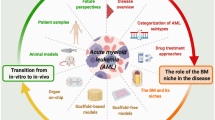Abstract
Cyclophosphamide must be metabolized by drug-oxidating systems in order to become biologically active. Up to now, it is not known exactly which metabolite is responsible for the teratogenic effects of the drug. Besides aldophosphamide and phosphoramide mustard, the metabolite acrolein must be considered as a possible candidate. We tested this unsaturated aldehyde in a mouse limb bud culture system, since results from in vivo studies are controversial and inconclusive.
The following results were obtained: (1)Concentrations of acrolein between 3 and 10mg/1 induce a significant impairment of limb bud differentiation with expiants from 12-day-old mouse embryos. Scapula and paw skeleton were more affected than ulna and radius. (2) With limbs from 11-day-old embryos we found similar effects, even at lower concentrations. (3) A contact time of 20–40 min is sufficient to induce abnormal development. (4) It is possible to antagonize the teratogenic effect of acrolein by addition of mesna (300 mg/1) to the culture medium. (5) The abnormalities observed with acrolein under these experimental conditions are clearly different from those seen with hydroperoxy-cyclophosphamide.
Similar content being viewed by others
References
Barach H-J, Baumann I, Neubert D (1978) The applicability of in vitro systems for the evaluation of the significance of pharmacokinetic parameters for the induction of an embryotoxic effect. In Neubert D, Merker HJ, Nau H, Langman J (eds) Role of pharmacokinetics in prenatal and perinatal toxicology. Thieme, Stuttgart pp 323–336
Blankenburg G, (1981) Limb bud organ cultures; Method description. In: Neubert D, Merker HJ (eds) Culture techniques. Walter de Gruyter & Co, Berlin, New York pp 590–593
Brock N, Hohorst HJ (1963) Über die Aktivierung von Cyclophosphamid in vivo und in vitro. Arzneim Forsch 13: 1021–1031
Brock N, Kreybig TV (1964) Experimenteller Beitrag zur Prüfung teratogener Wirkungen von Arzneimitteln an der Laboratoriumsratte. Naunyn-Schmiedeberg's Arch Pharmakol Exp Pathol 249: 117–145
Brock N, Stekar J, Pohl J, Niemeyer U, Scheffler G (1979) Acrolein, the causative factor of urotoxic side effects of cyclophosphamide, ifosfamide, trofosfamide and sufosfamide. Arzneim-Forsch/Drug Res 29: 659–661
Chaube S, Kurvy G, Murphy ML (1967) Teratogenic effects of cyclophosphamide (NCS-26271) in the rat. Cancer Chemother Rep 51: 363–376
Connors TA, Grover PL, McLaughlin AM (1970) Microsomal activation of cyclophosphamide in vivo. Biochem Pharmacol 19: 1533–1535
Fritz AG, Hess R (1971) Effects of cyclophosphamide on embryonic development in the rabbit. Agents and Actions 2: 83–86
Gibson JE, Becker BA (1968) Teratogenicity of cyclophosphamide in mice. Cancer Res 28: 475–480
Greenaway JC, Fantel AG, Shepard TH, Juchau MR (1982) The in vitro teratogenicity of cyclophosphamide in rat embryos. Teratology 25: 335–343
Greenberg LH, Verdes P, Tanaka KR (1964) Congenital anomalies probably induced by cyclophosphamide. JAMA 188: 423–426
Hales B (1982) Comparison of the mutagenicity and teratogenicity of cyclophosphamide and its active metabolites, 4-hydroxycyclophosphamide, phosphoramide mustard, and acrolein. Cancer Res 42: 3016–3021
Kitchin KT, Schmid BP, Sanyal MK (1981) Teratogenicity of cyclophosphamide in a coupled microsomal activating/embryo culture system. Biochem Pharmacol 30: 59–64
Manson JM, Simons R (1979) In vitro metabolism of cyclophosphamide in limb bud culture. Teratology 19: 149–158
Mirkes PE, Fantel AG, Greenaway JC, Shepard TH (1981) Teratogenicity of cyclophosphamide metabolites: phosphoramide mustard, acrolein, and 4-ketocyclophosphamide in rat embryos cultured in vitro. Toxicol Appl Pharmacol 58: 322–330
Mirkes PE, Greenaway JC, Rogers JG, Brundrett RB (1984) Role of acrolein in cyclophosphamide teratogenicity in rat embryos in vitro. Toxicol Appl Pharmacol 72: 281–291
Mirkes PE, Greenaway JC, Shepard TH (1983) A kinetic analysis of rat embryo response to cyclophosphamide exposure in vitro. Teratology 28: 249–256
Neubert D, Bluth U (1981) Limb bud organ cultures from mouse embryos after apparent induction of monooxygenases in utero. Effects of cyclophosphamide, dimethylnitrosamine and some thalidomide derivatives. In: Neubert D, Merker HJ (eds) Culture techniques, Walter de Gruyter & Co, Berlin, New York pp 175–195
Scheef W, Klein HO, Brock N, Burkert H, Gunther U, Hoefer-Jankey H, Mitrenga D, Schnitker J, Voightmann R (1979) Controlled clinical studies with an antidote against the urotoxicity of oxazaphosphorines: preliminary results. Cancer Treat Rep 63: 501–505
Schmid BP, Goulding E, Kitchin K, Sanyal MK (1981) Assessment of the teratogenic potential of acrolein and cylophosphamide in a rat embryo culture system. Toxicology 22: 235–243
Singh S, Sanyal AK, Singh AP (1974) Digital anomalities induced by cyclophosphamide (Endoxan-Asta) in rat foetusses. Acta Orthop Scand 45: 21–35
Stahlmann R, Bluth U, Neubert D (1981) Effects of some “indirectly” alkylating agents on differentiation of limb buds in organ culture. In: Neubert D, Merker HJ (eds) Culture techniques, Walter de Gruyter & Co, Berlin, New York pp 207–222
Stahlmann R, Bluth U, Wiessler M, Neubert D (1983) Interference of acetoxyalkyl-nitrosamines with limb bud differentiation in organ culture. Arch Toxicol 54: 109–129
Stahlmann R., Bluth U., Neubert D. (1984) Teratogenic potential of the cyclophosphamide metabolite acrolein. Teratology 29: (Abstract) 33 A
Wilk AL, McClure HM, Horigan EA (1978) Induction of craniofacial malformations in the rhesus monkey with cyclophosphamide (abs.). Teratology 17: 24 A
Author information
Authors and Affiliations
Rights and permissions
About this article
Cite this article
Stahlmann, R., Bluth, U. & Neubert, D. Effects of the cyclophosphamide metabolite acrolein in mammalian limb bud cultures. Arch Toxicol 57, 163–167 (1985). https://doi.org/10.1007/BF00290881
Received:
Accepted:
Issue Date:
DOI: https://doi.org/10.1007/BF00290881




